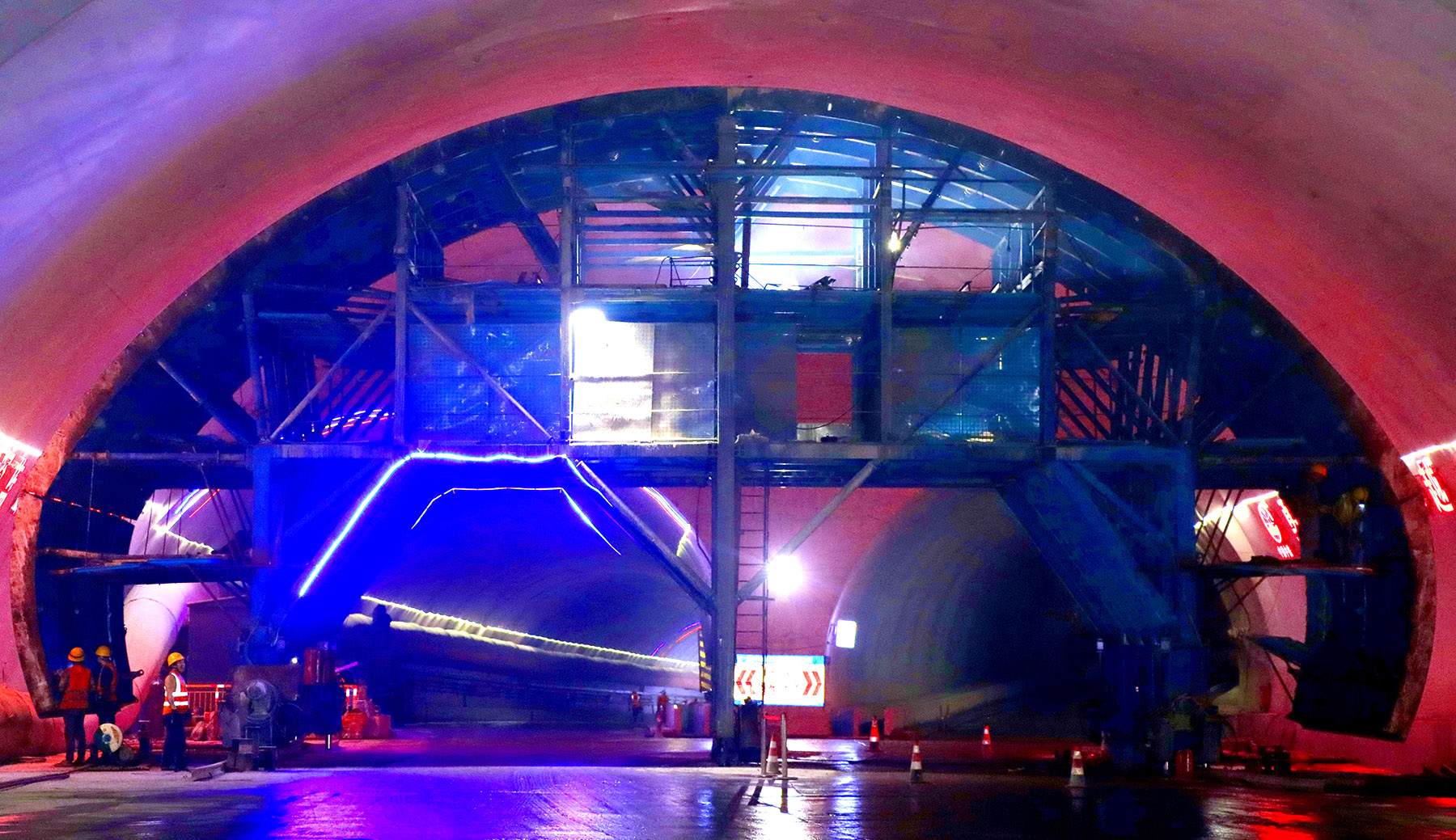
Chinese State builders participating in the building of the world's largest undersea tunnel in Qingdao, Shandong province, have boosted their construction abilities through technical innovations.
With technical enhancement, China Railway No 4 Engineering Group Co Ltd, which is building the Jiaozhou Bay Second Tunnel, made new headway on Saturday when they fully connected the northern line of the Huangdao-end land section ahead of schedule.
The tunnel will be 17.48 kilometers long, marking a new milestone in China's construction prowess, said Liu Aiwu, CREC4 project manager of the No 2 Bid of the tunnel.
READ MORE: Advanced technology played role in construction of undersea tunnel
It will link Qingdao's main urban areas with its West Coast New District and is being constructed through drilling and blasting, Liu said.
The world's largest undersea tunnel is also witnessing the highest water pressure for tunnel shields and deepest burial depth for blasts, he said.
Liu said, "In order to speed up the high-quality progress of the project, we have optimized a multifaceted construction plan, and realized simultaneous progress in the open excavation, the tunnel's main line as well as its ramp, largely elevating our work efficiency."
He said the total length of the main line of CREC4's No 2 Bid is 3.44 km, including 500 meters of open-cut tunnel and 2.9 kilometers of underground tunnel dug through drilling and blasting.
"While building this world-class benchmark project, our technical team has adopted modern methods such as three-dimensional laser scanning, seismic prospecting, high-precision geological radar, advanced horizontal drilling and in-hole imaging, accurately predicting the geological conditions of the tunnel from all directions," Liu said.
The Second Tunnel, as a key project in Qingdao during the 14th Five-Year Plan period (2021-25) and a major artery in its "six horizontal and nine vertical" transport corridors in the city proper, will help boost traffic on both banks of Jiaozhou Bay, bolster integration in Jiaozhou Bay rim regions and enhance the high-standard opening-up of Qingdao.
As a semi-provincial city, Qingdao now administers seven districts — including the West Coast New District — and manages three county-level cities, as an international port city.
Liu added, "We have made innovations on our computer programming technology, three-dimensional visualization technology, and developed an intelligent blasting design system for tunnel drilling and blasting excavation."
This, he said, has helped to automatically generate the blast hole layout, charging structure, a network diagram and blasting parameter table, thus enabling rapid calculation, quick generation and dynamic adjustment of the blasting parameters.
Xu Shengbin, Party branch secretary of the CREC4 project, said, "With our innovative work and through the joint efforts of over 400 on-site staff members, our project has won the honorary titles of Standardized Demonstration Site of Shandong Province and Standardized Demonstration Site of Qingdao Municipal Public Works."
ALSO READ: Construction starts on mega undersea link
By joining in the construction of this world-class project, CREC4 aims to bolster the country's construction strength in the new era, said Lu Ying, an employee from the CREC4 Seventh Engineering.
With an investment by State-owned Qingdao Conson Development (Group) Co Ltd, the Jiaozhou Bay Second Tunnel extends for a total length of 17.48 km, including a main tunnel length of 14.37 km, with 9.95 km being under the sea.
The Huangdao-end land section includes a main tunnel on the main line, a north shaft and a south shaft, she said, adding that the south shaft is 70.3 meters deep while the north shaft is 77.5 meters deep. Upon completion, they will serve as a "respiratory system" for the main tunnel.
She noted that the Second Tunnel started construction on Oct 29, 2020, and is expected to be completed and put into operation in December 2027.


